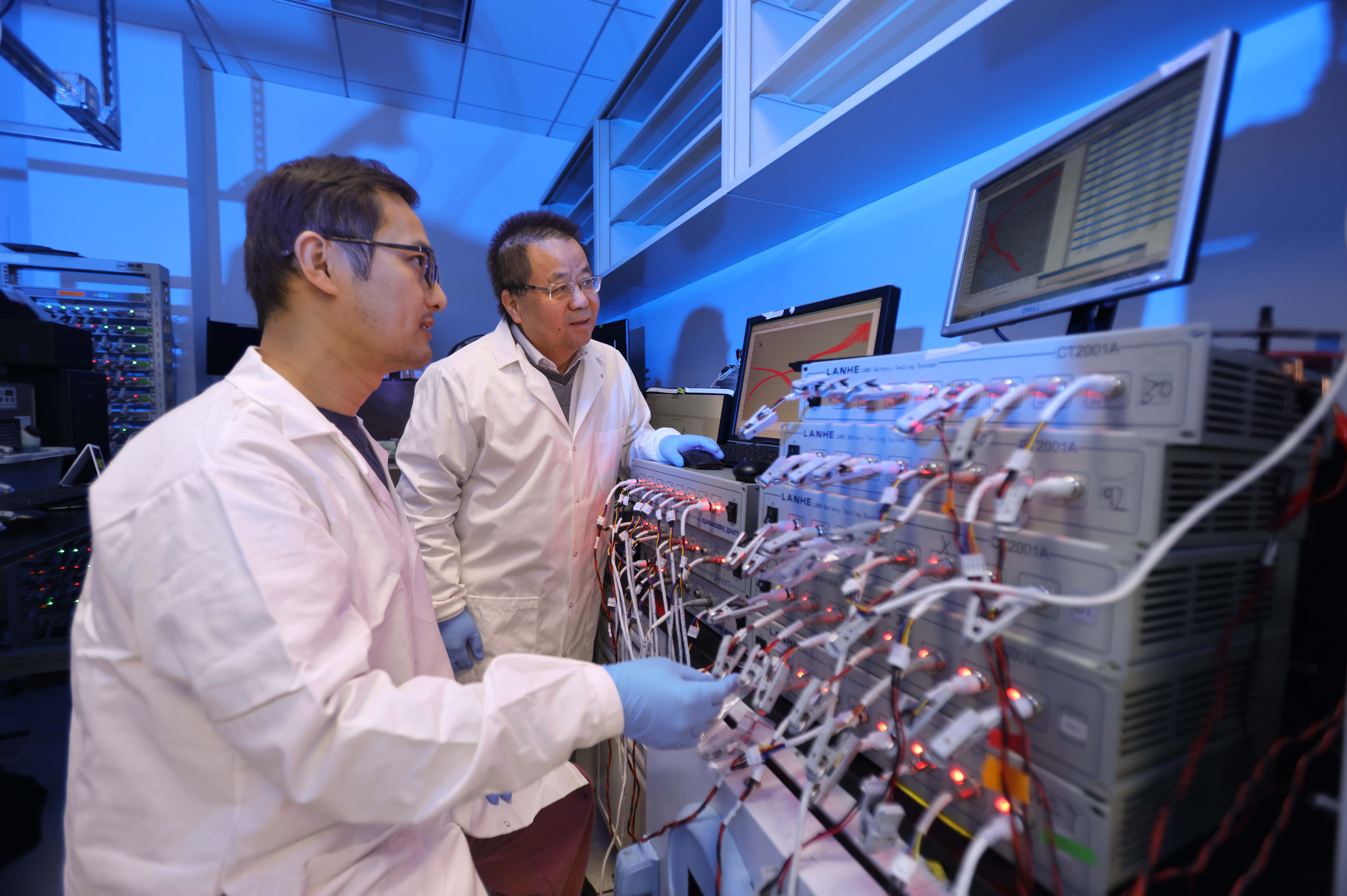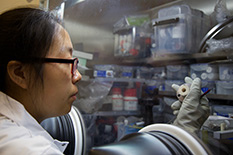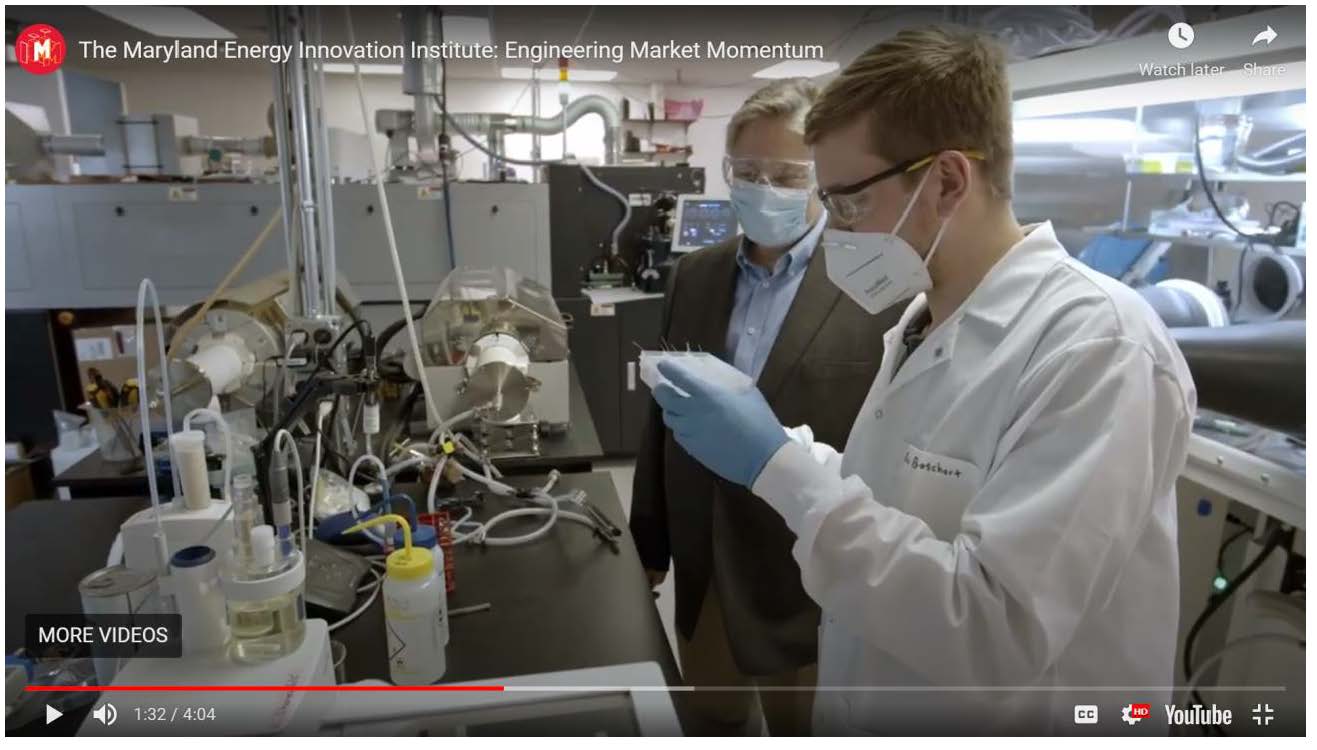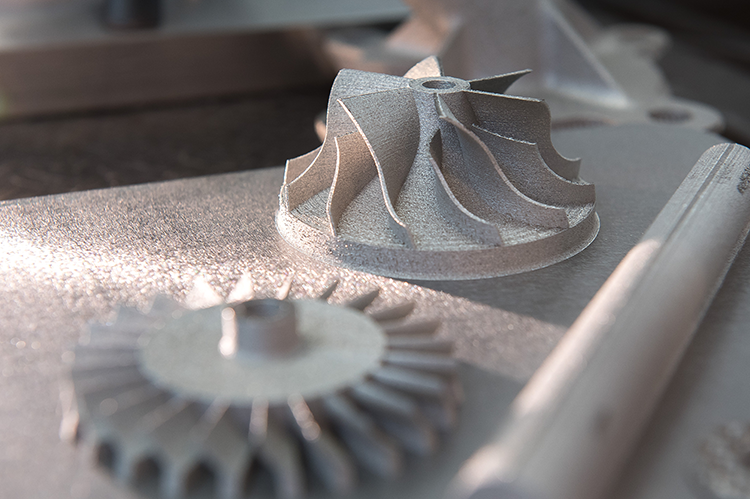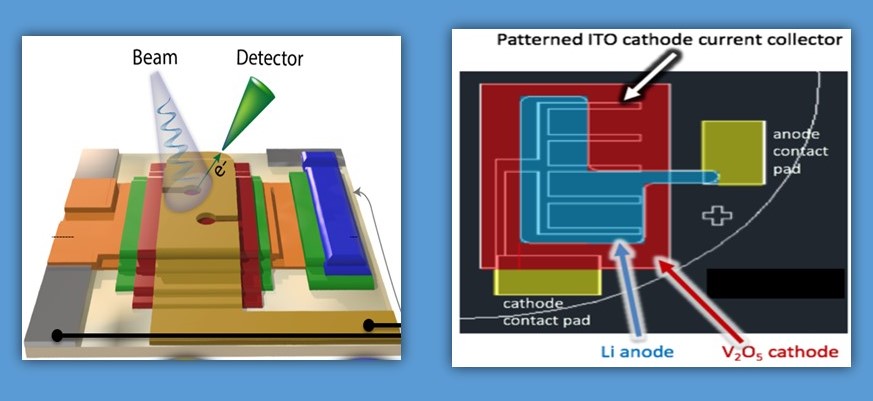News Story
MSE Research Reveals Unique Ionic Diffusion Mechanism in Super-Ionic Conductors

Current Li-ion batteries use a flammable liquid/polymer electrolyte, which has led to significant safety concerns as observed in the fatal Tesla Model S crash and Samsung S7 cellphone explosion last year. To that end, all-solid-state Li-ion chemistry, using ceramic-based super-ionic conductor (SIC) materials as a solid electrolyte, offers a promising next-generation battery. This battery will provide higher energy density and charging rate, in addition to improved stability (i.e. safety). However, very few SIC materials are able to transport Li+ fast enough for use as a solid electrolyte in solid-state batteries.
Yifei Mo (MSE Assistant Professor), Xingfeng He and Yizhou Zhu (both MSE Ph.D. students) performed quantum mechanical modeling of super-ionic conductor materials with the resolution of individual atoms to better understand how this material is able to quickly transport ions.
“Activating an ‘ion transport highway,’ if you will, is the key to making this material super-ionic – meaning, it has very high Li+ conductivity,” said Dr. Mo. “Our study revealed the unique physics of the fast ion diffusion in super-ionic conductors, which are highly distinctive from the classic diffusion model that standard textbooks teach.”
Indeed, the group’s findings that Li diffusion in SIC materials often involves multiple ions moving simultaneously completely contradicts current textbook knowledge of solid diffusion. By tracking individual atoms in these materials, using supercomputer modeling, the group unraveled the underlying physics of the fast diffusion process in this unique super-ionic conductor material.
MSE Professor at UC Berkeley, Gerbrand Ceder, commented “This work provides another important step forward in understanding the origin of the very high Li conductivity in some solids, as it highlights the importance of high Li content in the material leading to more concerted motion.”
The implications of this study will boost materials research and development to enable solid-state batteries, leading to safer electronics; specifically, electric cars with a longer driving range and a potentially shorter charging time.
Stanford University MSE Professor, Yi Cui added, “The work conducted by Yifei Mo offers new and important insight on fast ion transport and provides new materials principles for finding the new solid electrolyte.” What’s more, this new knowledge can be applied to fuel cells, catalysts, membranes, and more. “Understanding the fundamental mechanism of how ions move fast in solid state will have a profound impact on batteries, fuel cells and other electrochemical technologies,” Cui said. All of this technology, which is heavily based on ion-conducting materials, may transform the entire industry of energy generation, conversion and storage.
This research entitled, “Origin of fast ion diffusion in super-ionic conductors,” was published in Nature Communications on June 21, 2017 (DOI: 10.1038/ncomms15893).
Published June 22, 2017

